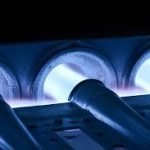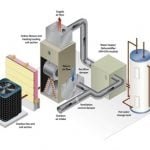Introduction
When winter chill sets in, a malfunctioning HVAC system can quickly become a homeowner’s nightmare. If you find yourself shivering despite having the heat on, it’s time to investigate why your HVAC system is not heating properly. In this guide, we’ll explore common issues related to heating, ventilation, and air conditioning (HVAC) systems, providing valuable insights into the types of systems and how to address potential problems.
Understanding Your HVAC System
Types of HVAC Systems:
HVAC systems come in various types, each with its own heating components. The main types include:
- Furnace Systems: Utilizing forced-air heating, these systems distribute warm air through ducts.
- Heat Pump Systems: These systems extract heat from the air or ground and distribute it throughout your home.
- Boiler Systems: Using hot water or steam, boilers distribute heat through radiators or baseboards.
Common HVAC Components:
- Thermostats: Control the temperature by regulating the heating and cooling cycles.
- Air Handlers: Distribute conditioned air throughout the home.
- Ductwork: Channels air to different rooms.
- Burners and Igniters: Responsible for heating in furnaces.
Why Is Your HVAC Not Heating?
Common Issues and Solutions:
| Issue | Possible Solutions |
|---|---|
| Thermostat Malfunction: | Check and replace faulty batteries; recalibrate if necessary. |
| Dirty Air Filters: | Replace or clean filters regularly for efficient airflow. |
| Pilot Light Issues (Gas Furnace): | Relight the pilot light or check for a faulty thermocouple. |
| Faulty Igniter: | Replace the igniter in gas furnaces if it fails to light. |
| Clogged Ducts: | Inspect and clean ducts to ensure proper airflow. |
| Malfunctioning Heat Exchanger: | Consult a professional to repair or replace the heat exchanger. |
How to Troubleshoot and Fix HVAC Issues
1.Check Thermostat Settings:
- Ensure the thermostat is set to the desired temperature.
- Verify that the mode is set to heating.
2.Inspect Air Filters:
- Replace or clean filters regularly (monthly or as recommended by the manufacturer).
3.Examine Pilot Light (Gas Furnaces):
- Relight the pilot light according to the manufacturer’s instructions.
4.Test the Igniter:
- In gas furnaces, a faulty igniter can be replaced to restore heating.
5.Inspect Ductwork:
- Look for any visible obstructions or leaks in the ducts.
6.Professional Maintenance:
- Schedule regular professional HVAC maintenance to prevent issues.
Conclusion
Understanding the intricacies of your HVAC system is crucial for maintaining a comfortable home environment. By identifying and addressing common issues like thermostat malfunctions, dirty filters, and faulty components, you can ensure your HVAC system heats your home effectively. Regular maintenance and timely troubleshooting will not only keep you warm but also extend the lifespan of your HVAC system.
Remember, when in doubt or facing complex issues, it’s always best to consult with a certified HVAC professional for a comprehensive assessment and solution. Stay warm and cozy!
Frequently Asked Questions (FAQ)
Q: Why is my heat pump not providing enough warmth?
A: Insufficient warmth from a heat pump could be due to low refrigerant levels, a malfunctioning compressor, or issues with the defrost cycle. Consult a professional for a thorough assessment.
Q: Can a clogged air filter affect cooling as well?
A: Yes, a clogged air filter restricts airflow, affecting both heating and cooling efficiency. Regularly changing or cleaning filters is crucial for optimal HVAC performance.
Q: How often should I schedule professional HVAC maintenance?
A: It is advisable to schedule professional maintenance at least once a year, preferably before the heating season begins, to ensure your system operates efficient.





